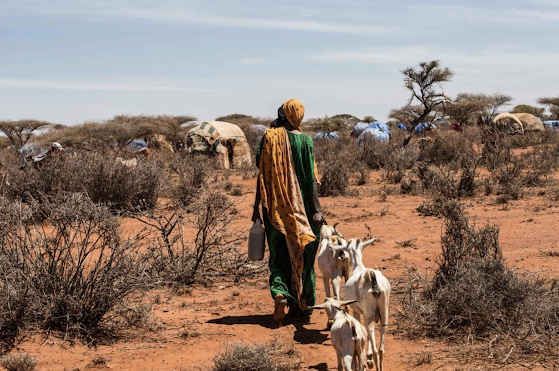Dams in an Era of Climate Change
As we have seen in our posts so far, climate change has the potential to hinder socio-economic development in Africa through changes in the distribution and availability of water resources. On the global scale, one of the most popular solutions to resolving these types of water resource issues in the past has been to invest in dams (National Geographic 2020). Dams are useful for water management and can provide a range of benefits from hydroelectric power generation, flood management and water storage for irrigation (Green Garage 2020). Particularly in Africa where around 70% of the population does not have access to electricity, there has been a renewed interest in creating more dams for hydropower (International Energy Agency 2011). Although this may help bolster economic growth in the short term, there is growing concern that hydroelectric power generation may not be the most sustainable (Climate Action 2018). One reason is due to the changes in rainfall patterns expected with climate change which may disrupt river flow and dam functioning (Tramblay et al. 2018). Therefore, in this post I hope to assess the viability of dam construction in the context of climate change in Africa and explain why we should still be cautious of increasing hydro-dependency.
On the one hand, dam construction that has already taken place across many countries in Africa has been largely beneficial for achieving socio-economic progress. For example, the electric power generated by the Okosombo dam in Ghana has been central to the growth of the commercial and manufacturing sectors, generating a vast number of jobs and making Ghana one of the most industrialised countries in West Africa (Figure 1) (Alhassan 2009). Furthermore, dams are generally well perceived in Africa as they draw in greater international investment and benefit local communities through development of infrastructure, greater employment opportunities and higher standards of living (Gyau-Boakye 2001).
Figure 1. The Okosombo Dam in Ghana which plays a vital role in producing electricity (Alhassan 2009).
There is also some evidence that the construction of dams in Africa could withstand future climate change. For example, Cole et al. (2014) showed using hydrological modelling of two IPCC climate change scenarios that there is generally low risk of current and planned dams failing due to an overall increase in river flow averages across the continent (Figure 2). In fact, it is promising to see that most dams which are being planned for the future have been located in areas which are expected to receive higher levels of rainfall (Figure 3). It suggests that in some areas, climate change may actually have a positive impact on Africa’s hydropower production.
Figure 2. Predicted hydropower production in Africa of (a) current dams and (b) future planned dams under two IPCC climate change scenarios (PCM B2 and ECHAM4 ALFI) compared to historical data (weighted by average capacity) (Cole et al. 2014).
Figure 3. Expected changes in average river flows for current and future dams under the ECHAM4A1F1 climate scenario. Key: Red = decrease in river flow, blue = increase in river flow and orange = no change. Size of circles represent the capacity of the dams with pink circles representing current dams and green circles representing planned dams (Cole et al. 2014).
However, Cole et al.’s (2014) study only takes into consideration future river flow averages which may mask significant regional and temporal differences in the distribution of annual rainfall. For example, when also considering changes in the variance of future rainfall there is evidence that countries such as Nigeria and Uganda will experience more years of drought (Cole et al. 2014). Furthermore, North Africa is expected to receive a large reduction in rainfall due to climate change which may have adverse impacts on the dams already located in these areas (Tramblay et al. 2018) Unfortunately, greater climatic variability can increase energy vulnerability in countries which are overly reliant on hydropower (Conway et al. 2018). For example, recent droughts in Ghana have shown that high dependence on the hydropower generated by the Akosombo Dam can have major adverse impacts on the economy (Bekoe and Logah 2013). As this video shows, during the 2006/7 droughts, dam water levels were so low that the country suffered from the severest power rationing in its history. According to Databank, the power shortages in 2007 stalled economic growth that year from 6.5% to around 4%, costing companies an extra $744 million on investing in alternative power sources (The Wall Street Journal 2007). It suggests that hydropower generation could impede a country’s development if they do not plan for extreme weather events resulting from climate change.





Comments
Post a Comment